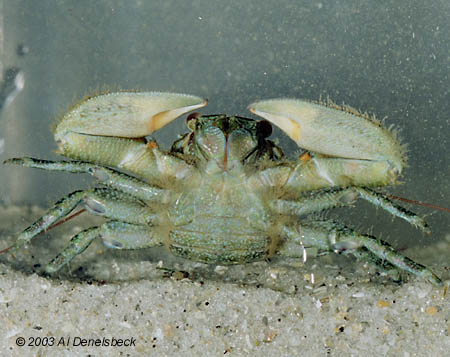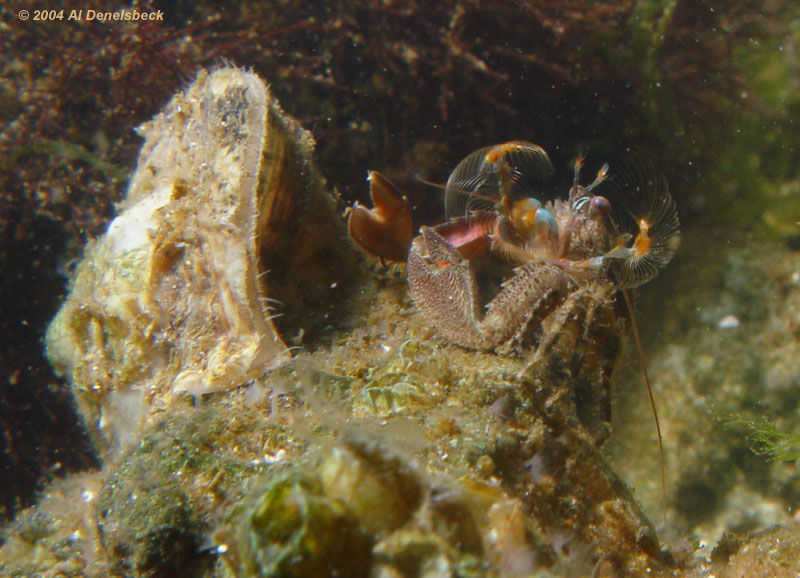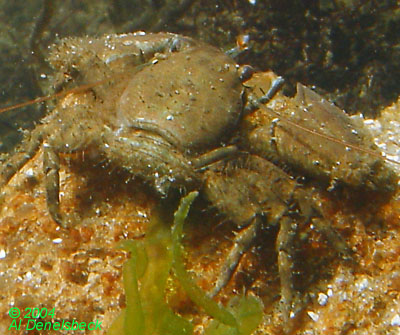|
They're relatively benign little critters, charismatic
as far as I'm concerned, who feed by straining microorganisms from the
water with two seinelike appendages at their mouth, which can be seen at
top – these are specially adapted versions of the little manipulative limbs, called millipeds, that most crustaceans have to handle food. They use a rapid alternating motion, 1 to 3 sweeps per second, which
makes it hard to time a photo to catch them in a decent position.
But they also have huge flat
chelipeds (pincers,) seemingly way out of proportion for their little oval bodies,
and I'm not sure of the full functionality of these yet. Part of me suspects
that they can press flat into the rocks and crevices, presenting a hard
target for predators to pry loose. But I've also observed one, only once,
jetting around the tank in midwater by using their belly 'scales,' much
like shrimp do, and there's a vague suspicion that the pincers then come
in handy for steering. Since I've only ever seen this once, I'm not putting
a lot of faith in the idea yet.
|
 |





